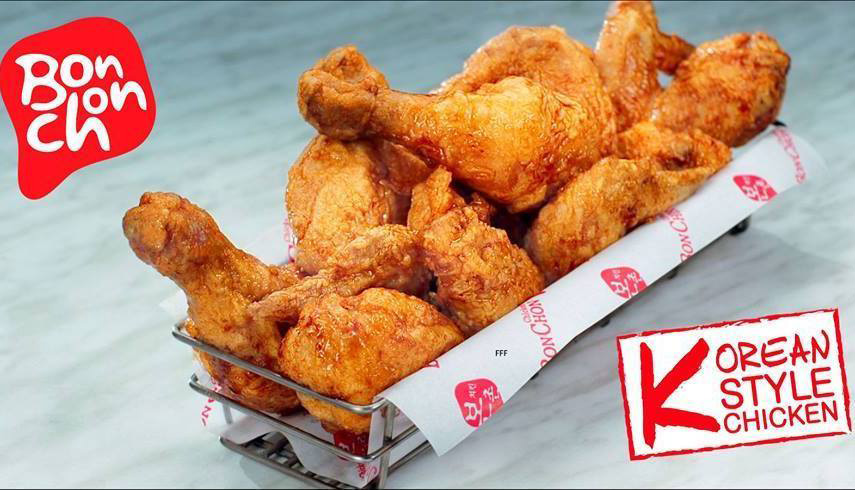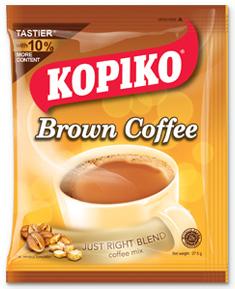MANILA, PHILIPPINES — Branding Nerd, a blog site aimed at placing the spotlight on brilliant ideas that brands have executed anywhere in the world, has recently published an article that revisits the concept of an ‘open hole’, this time in the context of Market Segmentation.
To learn more about the foundational lessons on the essence of branding, how to build a brand, and how to sustain a profitable brand, join the conversation and register for the #YoungMarketers Program running through June 29: https://bit.ly/3fX56LR
Here is Branding Nerd’s piece with an in-depth discussion on Kopiko®, and how this Indonesian coffee brand found an open hole and created a new large segment.
In previous blogs, we’ve talked about the concept of the ‘open hole‘ and why this is important in establishing the positioning of the brand. Brilliant brands like Bon Chon® and the singing septet BTS have found their own ‘open holes‘ in the fried chicken and music industries, respectively, which allowed them to successfully establish their strong brand positioning in their markets and thereby grab share from their competitors.
In this blog, we will further explore the concept of ‘open hole‘ once more and talk about this in the context of Market Segmentation.
“To be useful, segments must be measurable, substantial, accessible, differentiable, and accountable.”
Philip Kotler, Marketing Guru
What is ‘Market Segmentation‘?
There are a variety of definitions available out there.
I like this definition from Investopedia in particular: “Market segmentation is a marketing term that refers to aggregating prospective buyers into groups or segments with common needs and who respond similarly to a marketing action. Market segmentation enables companies to target different categories of consumers who perceive the full value of certain products and services differently from one another.”
The above definition speaks of three key points about market segmentation:
- Market Segmentation is about grouping together consumers with common needs. For example, all men need clothes. But male athletes as a group require different kinds of apparel versus male business executives as another group.
- Market Segmentation is about enabling companies to target different categories of consumers who perceive the full value of certain products and services differently from one another. For example, male golfers (as a sub-set of male athletes) perceive the full value of apparel products differently from male runners. Therefore a brand like Nike® is able to target these two distinct market segments of male athletes differently.
- Market Segmentation is about identifying a sub-set group who respond similar to a marketing action. For example, male golfers would likely respond similarly to a new introduction of male golf shirts.
Therefore, males can be segmented into athletes and businessmen.
Athletes can be further segmented into golfers, runners and more.
And in the overall apparel market, a sports apparel brand can target the specific market segment of male golfers, and these consumers would likely respond similarly to golf apparel products.
That’s market segmentation.
Market segmentation helps companies significantly in two major ways:
First, it helps companies identify an ‘open hole’ when launching a new brand.

In the case of the fried chicken market, a certain market segment was able to perceive that Bon Chon®‘s Korean Double-Fried Chicken offers a different perceived value from Jollibee’s Chicken Joy® Fried Chicken and from KFC®. The consumer of Bon Chon® is within the overall market of ‘fried chicken’, however, the same consumer also belongs to the sub-set of a ‘Korean Fried Chicken’ market segment. Bon Chon® was able to find an ‘open hole‘ within the very crowded and fiercely competitive fried chicken market by identifying a specific and substantial market segment where there was no strong player at that time. That’s how Bon Chon® was able to grab market share from its competitors.
Second, it can also be used as a strategy to create new markets for an existing brand.

In the example of Starbuck®s, in 1995, or twenty-four years after the brand was launched in 1971, Starbucks Frappuccino® was introduced. It was a market segmentation strategy of the brand to attract younger customers who were distinct from the traditionally older customers of Starbucks® . It was a brilliant move of Starbucks® which enabled the brand to increase their revenues and market share, simply by finding an ‘open hole‘ in a new market segment that was previously unserved by the brand or other brands.
However, going back to our quote from Kotler, a market segment must be ‘substantial and differentiable‘ for a company to invest its resources into it. Otherwise, the market segment is just not worth the time and effort.
In this blog, we focus on Kopiko® and how it was able to secure the market leadership position away from Nestlé’s Nescafé Original 3-in-1® in the large, still growing, and highly competitive 3-in-1 coffee market in the Philippines.

It was no small feat.
Nestlé’s Nescafé Original 3-in-1® and URC’s Great Taste Coffee® were long-standing and dominant players in the instant coffee market in the Philippines when Kopiko® entered back in 2006.
So how did Kopiko® manage to go from zero market share to now being the market leader with approximately 45% share of this US$1billion market?
The answer lies in its market segmentation strategy.
Kopiko® is a brand owned by manufacturing giant PT Mayora Indah Tbk, or simply called Mayora, which is an Indonesian food and beverage company founded on 17 February 1977 in West Jakarta. The company is recognized as the world’s largest coffee candy manufacturer through the Kopiko® brand. Its annual revenue is estimated to be nearing US$2billion.
In the Philippines, the company first launched Kopiko Astig 3-in-1 Black Coffee® in 2006. But it was the launch of Kopiko Brown® three years later in 2009 which I believe catapulted the brand towards market leadership.

Kopiko Brown® was positioned as having a rich coffee flavor combined with a sweet caramel flavor with a hint of chocolate and creamy texture. “Creamy with a Coffee Kick“ according to Mayora’s website. It so happened that ‘creamy’ and ‘rich coffee flavor’ were not attributes associated with then market leaders Nescafé Original 3-in-1® (‘authentic taste and aroma of coffee‘) and Great Taste 3-in-1® (‘the first complete coffee mix‘).
In 2011, a ‘mommy blogger’ wrote: ‘Hubby and I are coffee lovers. Before, we love to drink Nescafe Original 3-in-1, until we decided to switch to Kopiko Brown Coffee after we have tasted it. Kopiko Brown Coffee for me tastes better than Nescafe Original 3-in-1, since it’s creamier and has richer taste and aroma. Last week, I went to the nearest supermarket to replenish our stocks. I was planning to buy Kopiko Brown Coffee but to my surprise the shelves were empty.’
One of her readers responded with: “Nescafe’s Brown and Creamy remake doesn’t even make it to Kopiko’s knees…I think Nescafe is very threatened by Kopiko, because it is slowly gathering hordes of followers.”
It had become clear that a new market segment had emerged – a large group of consumers who were looking for a richer coffee taste combined with a creamy texture. And this group was different from those consumers who just wanted a regular 3-in-1 coffee experience.

By 2012, I sensed that Kopiko® had secured market leadership when I had to drive my daughter to the University of the Philippines entrance exam venue in Diliman, Quezon City. After dropping her off in the place of her entrance examinations, I couldn’t leave the area due to the high number of cars that were stuck in the parking lot. So I decided to just park and walk around the grounds to kill time. While walking around, I came across some street vendors, and to my surprise, I saw that they were no longer selling sachets of Nescafé instant 3-in-1 coffee, but rather, sachets of Kopiko Brown®!
Street vendors are as grassroots as you can get. The fact that Kopiko® was the only 3-in-1 coffee brand being sold at that level indicated to me that there has been a major shift in the competitive landscape of the instant coffee market.
These bits and pieces of market evidence are in no way scientific, however, they do provide indications on what’s happening in the market.
True enough, by 2013, Nescafé was forced to belatedly launch its own Nescafé Brown® in 2013, a good six years after Kopiko Brown® was launched in the Philippines. Perhaps a bit too late. And of course, Great Taste® also had to follow suit with Brown Barako. This is because the market segment who used to be content with just a regular 3-in-1 coffee experience had discovered something richer and creamier and they were shifting their preference towards Kopiko Brown®. But of course, this is not to say that the regular 3-in-1 coffee market segment no longer exists. It has just become smaller.
According to Euromonitor International, by 2018, Nescafé®’s share in the 3-in-1 market had dropped to 36.9%, from more than 40% in 2014, while Kopiko®’s share almost doubled to 34.1% from only around 18-19% in 2014. URC’s Great Taste Coffee dropped to third place with 25.6%.
Kopiko Brown® had found an open hole and created a new large segment. And this, together with the other variants of Kopiko® eventually enabled the brand to grab overall market leadership in the 3-in-1 coffee market.
Today “Brown” has grown to become a major segment in the instant 3-in-1 coffee market. And because Kopiko Brown® was the first to introduce itself in this segment, the brand has defined the market segment itself: ‘richer coffee flavor, creamier texture‘.
The hedonic dimension of any food product will always include taste and sensory attributes as important considerations. The brand was able to determine two important insights:
First, that ‘rich flavor‘ and ‘creamy texture‘ fit perfectly into these important consumer attributes with respect to 3-in-1 instant coffee.
And second, there was no brand dominating this ‘richer coffee flavor, creamier texture‘ space in the market. In other words, they have found an ‘open hole‘.
Today, Kopiko® is estimated to hold around 45% share of this US$1billlion market in the Philippines. And is poised to strengthen its market leadership even more.
Key representatives from Indonesia and the Philippines gathered back in April 1, 2019, to discuss the continuous development of bilateral trade and investment between the two countries. Mr. Andre Atmadja, president director of Mayora Group (5th from left), was on hand to help announce the US$80million investment.

In 2019, PT Mayora Indah Tbk (Mayora) announced its investment of over $80 million in local coffee manufacturing and processing operations until 2024. Mayora inked a memorandum of understanding with Lima Land Inc. to lease property within LLI’s Special Economic Zone in Malvar, Batangas. Once fully completed, the manufacturing and processing plant in Batangas will help meet increasing demand for local consumption and exports. It is projected to generate some 3,000 new jobs on top of the 4,500 jobs that Mayora’s Philippine-based businesses employed at that time. This will give the brand a further cost advantage once the products are locally produced in the Philippines since the products have been imported from Indonesia since its launch in 2006.
This brilliant brand teaches us three important lessons with respect to market segmentation:
- First, a market segment is worth pursuing if it is substantial and differentiable (i.e. there is a perceived value that is different – richer taste, creamier texture). Dominance in a substantial market segment can actually lead to overall market leadership.
- Second, a market segment can only be substantial if this is segment is aligned with the most important consumer attributes (i.e. taste and sensory experience are highly important consumer attributes in this market, therefore this segment is substantial).
- And finally, the first brand in a market segment will always have the upper hand since it is the first brand to own that position in the mind of the consumer (i.e. the ‘Brown‘ segment was originally introduced by Kopiko®, therefore other ‘brown‘ brands will be viewed as wannabes.)











